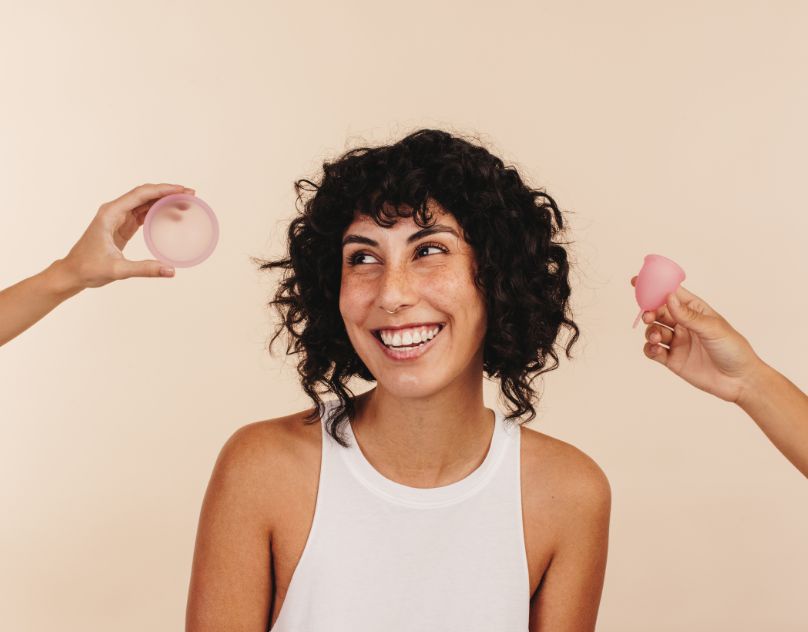Menstrual cups have gained popularity as a sustainable and cost-effective alternative to traditional menstrual products. But, like any other choice regarding women's health, it's essential to consult experts. In this article, we'll explore the pros and cons of menstrual cups from the perspective of gynecologists and obstetrician in Australia, shedding light on how to use them effectively. Let's dive into the insights provided by these medical professionals.
The Menstrual Cup - A Gynecologist's Perspective
Menstrual cups are making waves in the world of feminine hygiene, and gynecologists are taking notice.
- Environmentally Friendly - Menstrual cups are eco-friendly. They can be reused for several years, reducing the environmental impact of disposable pads and tampons. "Many of my patients have switched to menstrual cups to align with their sustainable lifestyle choices".
- Reduced Risk of Toxic Shock Syndrome (TSS) - Gynecologists recommend menstrual cups due to their lower risk of causing TSS compared to tampons. The absence of synthetic fibres and harmful chemicals can decrease the chances of bacterial growth.
- Cost-Effective - An obstetrician in Melbourne mentions that menstrual cups are a cost-effective option in the long run. "While the initial investment may seem high, the savings over time are significant.
Potential Drawbacks and Considerations
Despite their numerous advantages, menstrual cups may only be suitable for some.
- Learning Curve - Using a menstrual cup for the first time can be challenging. "It may take a few cycles to insert and remove the cup correctly. It's essential to be patient and persistent."
- Fit Matters - The ideal fit of a menstrual cup varies from person to person. "Choosing the right size and shape is crucial to prevent leakage and discomfort. Consulting a gynecologist or a trained healthcare provider for guidance can be helpful."
- Hygiene Is Key - Keeping the menstrual cup clean and sanitised is essential to prevent infections.
How to Use a Menstrual Cup - Step-by-Step Guide
Using a menstrual cup correctly is essential for a comfortable and leak-free experience. Here's a step-by-step guide recommended by gynecologists and obstetricians:
- Wash Your Hands: Always begin by thoroughly washing your hands to ensure proper hygiene.
- Fold the Cup: There are different folding techniques you can use to insert the cup. The most common folds are the C-fold and the punch-down fold.
- Insert the Cup: Relax your pelvic muscles and gently insert the folded cup into your vagina, angling it slightly toward your tailbone. Ensure it sits low enough, with the stem protruding for easy removal.
- Allow It to Unfold: Once the cup is inside, release your grip and let it unfold to create a seal against the vaginal walls.
- Check the Seal: To confirm a proper seal, run your finger around the cup's base. You should feel no creases or irregularities.
- Wear for Up to 12 Hours: Menstrual cups can be worn for up to 12 hours, depending on your flow. However, gynecologists suggest emptying and cleaning the cup at least every 6-8 hours to avoid any complications.
- Removal: When it's time to remove the cup, sit on the toilet, bear down with your pelvic muscles, and gently pinch the base of the cup to break the seal. Slowly pull it out, keeping it upright to prevent spillage.
- Empty and Clean: Empty the cup into the toilet, rinse it with cold water, and clean it with a mild, unscented soap or a specific cup cleanser. Sterilise it before each cycle.
Expert Advice on Menstrual Cup Care
Gynecologists and obstetricians emphasise the importance of proper care and maintenance of your menstrual cup to ensure its longevity and your safety.
- Regular Cleaning - "Maintaining good hygiene is crucial. Always clean your cup with water and a mild, unscented soap, especially after emptying it."
- Sterilisation - Boil the cup for a few minutes at the beginning and end of each menstrual cycle to sterilise it. Avoid harsh chemicals, as they can damage the cup.
- Storage - Store your menstrual cup in a breathable cotton pouch or a ventilated container when not in use. Avoid airtight or plastic containers.
Ultimately, menstrual cups offer a sustainable and health-conscious alternative to traditional menstrual products. However, the decision to switch to a menstrual cup should be made with the guidance of a healthcare professional. Always consult with your gynecologist or obstetrician to determine if a menstrual cup is the right choice for your unique needs and circumstances.


No comments yet